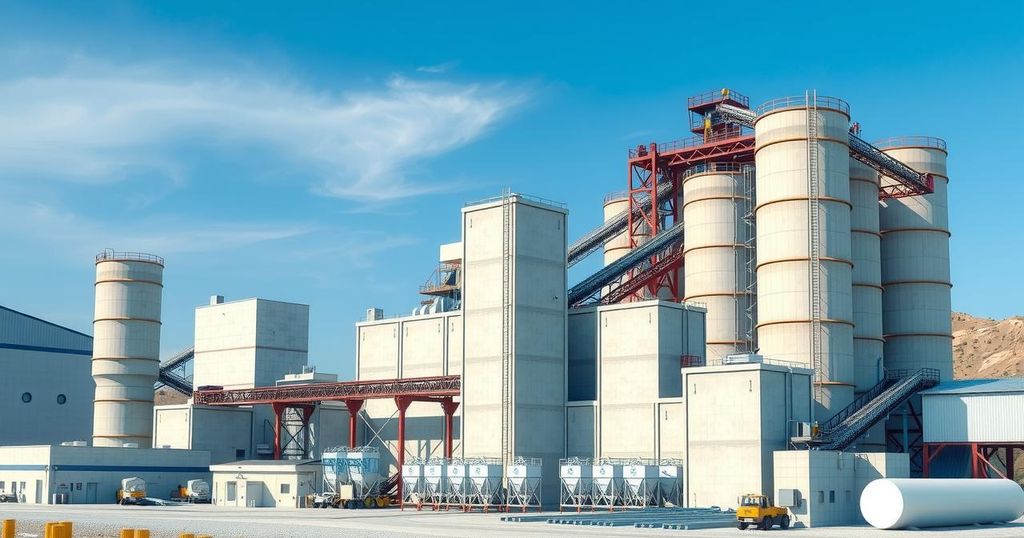Cameroon to Increase Cement Production Capacity to 12.7 Million Tons by 2025

Cameroon plans to boost its cement production capacity to 12.7 million tons by 2025 with three new plants in Édéa, primarily built by Chinese investors. This expansion aims to satisfy local demands and explore international markets. Despite rising production capabilities, cement prices remain high due to import costs.
Cameroon is poised to enhance its cement production significantly by adding three new cement plants in Édéa, located in the Sanaga-Maritime department. By the end of 2025, these plants will elevate the nation’s total production capacity to 12.7 million tons, addressing local demand and increasing potential for international market exports.
The Minister of Industry, Mines, and Technological Development, Fuh Calistus Gentry, recently inspected these new plants and nearby quarries, which are being established by Chinese investors in Édéa. The first plant, Sino Africaine (Sinafcim), is under construction, aiming for an annual capacity of 1 million tons and employing 200 workers, predominantly Cameroonians. Production is anticipated to commence in April 2025.
The second plant, Central Africa Cement (CAC), has been operational for a few months with a production capacity of 1.5 million tons per year. It presently employs 100 individuals, with future plans to double this workforce. Meanwhile, Yousheng Cement, the third facility located along the Dibamba River near Douala, remains under construction with a projected capacity of 1.8 million tons per year.
When all three plants commence operations, Cameroon’s production will rise by 4.3 million tons, satisfying a national demand of 8 million tons and enabling possible exports. The cement sector in Cameroon has shown remarkable growth; with these plants, the country will have nine production units, a significant development since the end of Cimencam’s 48-year monopoly.
Cimencam, a subsidiary of Lafarge Holcim Maroc Afrique, previously held the market with a 2.3 million ton capacity. Since 2015, various companies have entered the sector, including Dangote Cement and Cimaf, fostering increased market competition. However, despite this surge in production capacity, cement prices remain elevated, with a 50 kg bag costing between 5,100 and 5,300 FCFA in major cities like Douala and Yaoundé.
In conclusion, Cameroon is taking substantial steps to augment its cement production capabilities through the establishment of new plants. These developments will fulfill local demands and pave the way for export opportunities. Although competition in the market has increased, the high costs of cement continue to pose challenges for consumers. The ongoing investment in the cement industry signifies a positive shift in Cameroon’s economic landscape.
Original Source: www.businessincameroon.com








